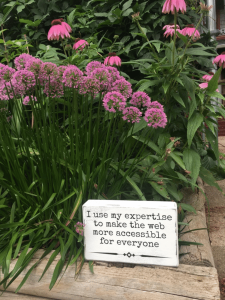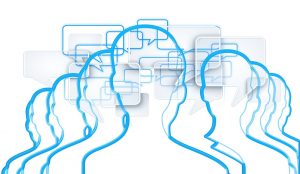
With the help of the globe-spanning soapbox known as the Internet, your customers now wield more power than ever before when it comes to the success of your organization. While a few negative rants among a deluge of neutral or positive online reviews might not hurt your business, a single negative experience that goes viral can do major PR damage and even cause a larger company’s stock prices to dip.
Though you can’t stop the chatter of your customers, you can have some influence over the content of their conversations by hiring employees who provide consistently awesome customer service from the start. With the help of three hiring best practices, you can build a hiring strategy that sets your employees – and your business – up for customer service success.
Check Your Current Hiring Practices: Are You Finding the Right People or Just Filling Seats?
Though companies in similar industries frequently share many similar traits, every company is unique and has distinguishable features. So the question is, what are the best hiring practices for your specific space and, more importantly, your organization? Your company’s culture, procedures, training, and goals are what set it apart from your competitors, and it is precisely these differentiating factors that should be taken into account when determining which candidates will be the most capable of delivering superior service.
If you want to hire employees capable of forming lasting customer relationships, take the time to work with your team to:
- Define what it means to deliver exceptional service
- Determine what it takes to deliver consistent, excellent service to your customers
These steps are critical in developing a hiring process that drives both customer satisfaction and revenue. FurstPerson’s Dr. Brent Holland elaborates on the far-reaching impacts of the hiring process, pointing out:
“Although some companies are much better at screening candidates to find the RIGHT people, industry data suggest that these companies are rather unique. For example…[a recent annual report revealed] retail companies lost $ 33.5 billion due to shrinkage, of which $ 14.4 billion (43%) was attributed directly to employee theft. Interestingly, according to CareerBuilder, retailers with high retention generally show significantly lower shrinkage than companies with high attrition. That’s the good news. The bad news is that the retail industry as a whole has an attrition rate of about 50%, according to First Research.”
Companies dedicated to hiring candidates who have the right mix of skills, abilities, interests, and personal characteristics to perform the core job duties and who have a compatible belief system will outdistance their competition.
3 Best Practices for Hiring Employees
Regardless of industry, it is critical to understand how far the impacts your hiring decisions reach, and to take the steps necessary to find, hire, and keep the best employees for your business. Below, we have outlined proven methods to help you define excellent service and identify it takes to deliver it to your customers on a consistent basis.
1. Look at the Bigger Picture
Though it can be tempting to jump straight to trying to identify candidates with the qualities that seem like the right fit for a certain role, it is important to first take a big step backwards and assess your company’s broader strategy.
In terms of developing and implementing a competitively differentiated hiring strategy, we recommend starting with these questions:
- What’s the company’s corporate culture?
- How does the company define and strive to achieve superior customer service?
- How is the company performing relative to its competitors today – both financially and in terms of satisfaction?
- Over the next 12 months, what are the top five areas to improve in your industry?
- What are customers (current and former) saying about the company?
- What will the company’s focus be in three to five years?
- Who are the key competitors and will they be the same over three to five years?
Finding the answers to the above will help you determine how your company is performing, and where it’s headed in the medium and long term.
2. Understand Your Operating Environment
Jobs don’t operate in a vacuum. Whether you’re hiring for retail, customer support, or sales, the operating environment your employees will be working in is unique to your company. While one type of employee might thrive in a fast-paced role that requires a large amount of face-to-face interaction, another employee who looks just as promising on paper may perform poorly under those same circumstances.
To get a full picture of your company’s operating environment, start by documenting the nature of some key components. For example:
- Work environment: Is it an open office environment, cubicle, or remote position?
- Work conditions: What’s the temperature? How loud or quiet is it? How much sitting/standing is involved?
- Performance expectations: How many tickets are employees expected to close? How many sales are they expected to make?
- Policies and procedures: How are employees expected to dress? Under what circumstances can they make exceptions for a customer?
- Compensation and reward structure: Is there a bonus or commission structure? How does it work?
- Culture within the business setting: What do the relationships among co-workers look like? How does management relate to its employees?
The information you reap from this documentation represents the context in which the jobs will operate, enabling you to not only gain a better understanding of the working conditions themselves, but also of potential drivers and inhibitors.
3. Conduct a Review of the Role
The final requirement is to conduct a review of all retail jobs, their goals, and how they impact the company’s success. Invest the time necessary to clearly document what representatives do on a daily basis, how they go about completing their work, and what it means to be successful. Be sure to specify what knowledge, skills, abilities, and other individual characteristics are essential to complete each job successfully.
The information gathered through these hiring best practices will tell the story of what it means and takes to deliver exceptional customer service.
Make Your Hiring Practices Better with Assessments
In terms of providing an excellent customer service experience, it’s worth the time and effort to make sure the person you’re putting on the front lines not only has the skills to do the job well, but that he or she will be a good fit for the culture and demands. Pre-hire assessments not only help companies compete more effectively, but they ensure people will get jobs they enjoy by matching the right candidates with the right organizations.
Business & Finance Articles on Business 2 Community
(65)






